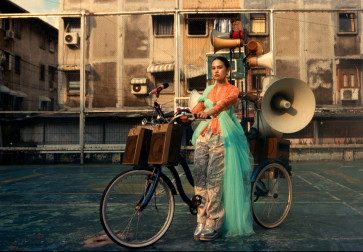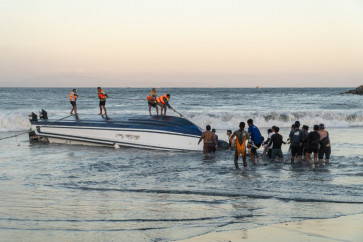Popular Reads
Top Results
Can't find what you're looking for?
View all search resultsPopular Reads
Top Results
Can't find what you're looking for?
View all search resultsFashion buffs seek high-quality knockoffs
French fashion legend Yves Saint Laurent once said that dressing is a way of life, with which local fashions buffs who depend on knockoffs of world-class clothing lines would certainly agree
Change text size
Gift Premium Articles
to Anyone
F
rench fashion legend Yves Saint Laurent once said that dressing is a way of life, with which local fashions buffs who depend on knockoffs of world-class clothing lines would certainly agree.
However, a young woman who runs an online clothing store told The Jakarta Post on Monday that knockoff clothing, such as copies of Topshop, Zara, Mango and other international brands, were also high quality merchandise.
“We call them ‘replicas’ instead of counterfeits, actually,” said the woman, who requested anonymity.
“Replicas are 80 or 90 percent identical to the originals,” said the 20-year-old, claiming that the copies were made from similar materials and had intricate stitching just like the originals. “Topshop scallop shirts have intricate patterns. The replicas are almost as great as the originals.”
“Producers of knockoffs can even put Zara labels on the back of the clothes,” she said.
Enthusiasm grows as fashion buffs realize they can get copies at much lower prices.
A pleated Zara skirt costs about Rp 300,000 (US$32.70) while a knockoff sells for Rp 100,000.
“The demand for replicas is very high,” she said.
The woman utilizes BlackBerry groups and a Facebook page for business. She can sell six of the same design of shirt or skirt made in different colors within three days.
“I can sell items high in demand like Zara skirts all in just one day,” she said.
Pirate clothes: A shop at Tanah Abang in Central Jakarta sells women’s shirts, some of which are imitations of international brands and sold for between Rp 50,000 (US$5.50) and Rp 60,000. The Institute for Economic and Social Research at the University of Indonesia predicts counterfeit clothes sales cause as much as Rp 15.9 trillion in potential losses. JP/Ricky Yudhistira
Fashion enthusiasts are also hungry for other Zara items such as high-waist jeans.
“Good replicas sell for above Rp 100,000,” she said.
According to research by the University of Indonesia’s School of Economics, clothes are the third most pirated products in Indonesia after leather and software.
Fake clothes comprised 30.2 percent of all clothing products sold by Indonesian stores and online shops, according to the report.
Researcher Eugenia Mardanugraha from the Economy and Community Investigative Institute at the University Indonesia’s School of Economics said that counterfeit clothes represented potential losses of Rp 15.9 trillion.
“We count more than state losses from the tax. We count all possible loses from other sectors like the cotton industry,” she said.
“A lot of fashion lovers admire these products, which look very similar to the originals. There is growing demand not only in the capital but also in big cities,” Eugenia said.
Although lamenting the rampant practice of pirating, Euginia acknowledged that the high demand also created jobs. She did, however find it difficult to accept that local designs were pirated. “Domestic designers should be better respected,” she said.
Ria Miranda, a local designer of Islamic clothes, said the pirating of clothing was inevitable no matter how hard she tried to protect her designs.
“Indonesian consumers are very price-sensitive. Lower prices attract them while the originality of a product is a secondary consideration,” she said.
One of Ria’s most pirated items, loose hoodies, retail for more than Rp 300,000, while copies selling for Rp 45,000 to Rp 110,000 can be easily found in shopping centers like Tanah Abang and Ambassador Mall.
“Honestly, counterfeit products have the potential to ruin the market I have built. But I see this as a challenge instead of an obstacle,” said Ria, who graduated from Esmod
Indonesia.
“I believe customers will eventually realize which products are original. There is no point in worrying about the counterfeits, I will just keep improving my designs,” she said.
Supriyani, a shop owner at Tanah Abang Blok B market, said hoodies were among the favorite apparel choices for young women. “Prior to Idul Fitri, the demand for this kind of T-shirt increased dramatically. I sold more than 20 pieces in one day,” she said. (lfr)










